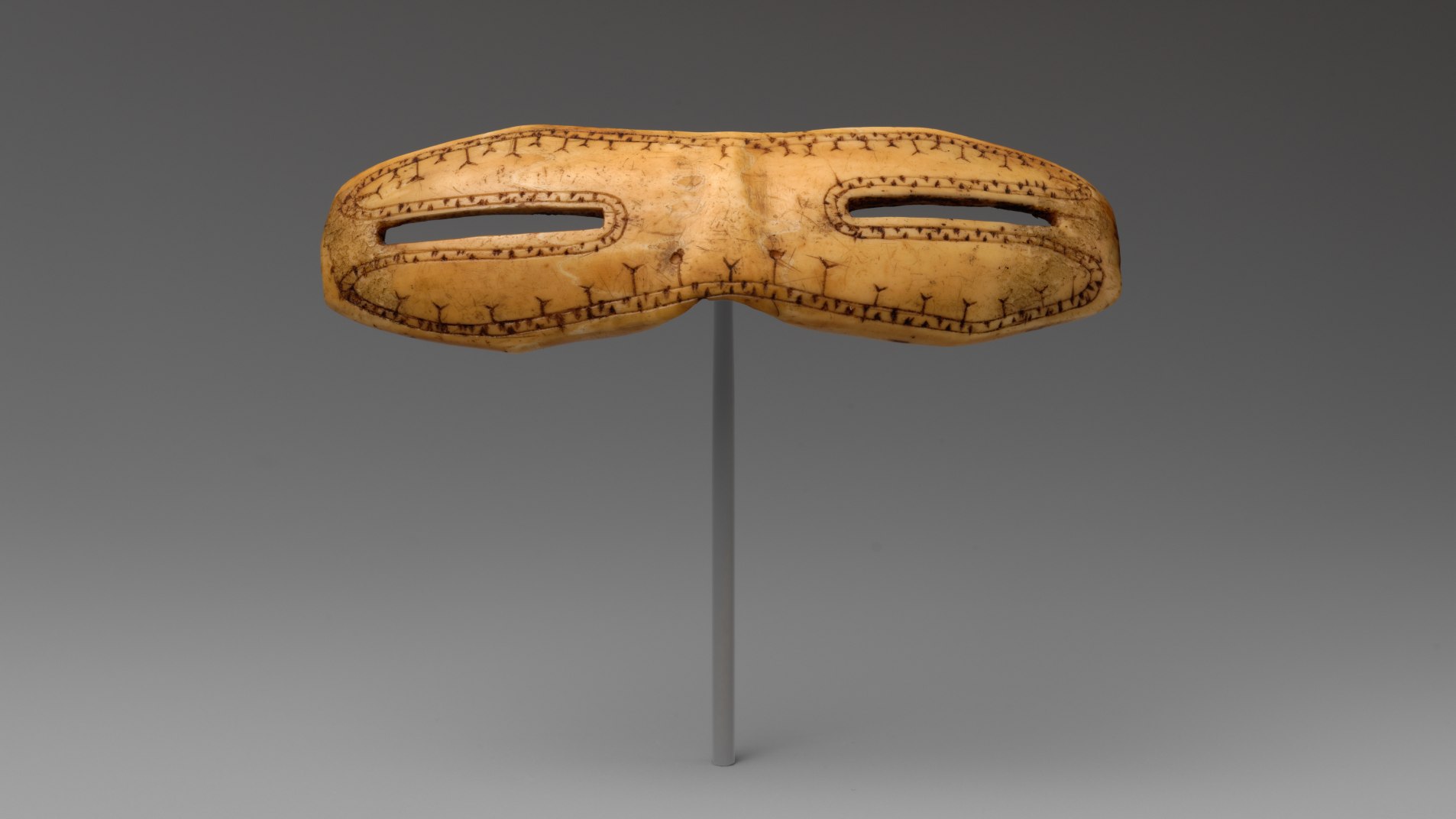
Name: Thule snow goggles
What it is: Eye protection carved from walrus ivory
Where it is from: Nunavut, Canada
When it was made: Circa 800 to 1200
Related: Dolní Věstonice Portrait Head: The oldest known human portrait in the world
What it tells us about the past:
These goggles, crafted by the Thule people who lived in Alaska and northern Canada around 800 to 1600, are a very early example of an accessory used to protect the eyes from Arctic snow and ice. In the Inuktitut language, the goggles are known as iggaak.
Carved from walrus ivory, the goggles were made sometime between 800 and 1200. The eyewear measures 5 inches (12.7 centimeters) across and 1.1 inches (2.9 cm) tall, and it may have once had leather or sinew straps to affix it to someone’s face. This particular example was collected around 1930 by a Royal Canadian Mounted Police officer on north Baffin Island in the Nunavut territory, according to the Metropolitan Museum of Art in New York City, where the object is on display.
These snow goggles are easily identifiable by the wide and narrow eye slits, which functioned to shield the wearer from eyeball sunburns, as well as from the blowing ice and snow, while allowing a wide field of vision. They have been found throughout the Arctic, suggesting they are highly effective eye protection. This example is decorated with engravings of double lines, spikes and Y shapes, which were likely significant to the wearer.
MORE ASTONISHING ARTIFACTS
According to the University of Alaska Museum of the North, the Thule people are considered the ancestors of modern Inuit, and they perfected various Arctic adaptations, including hunting sea mammals, using dogs to pull sleds, and creating snowhouses or igloos. The Thule were proficient at sewing; they used animal skins to make tents and clothing. There is also evidence that the Thule traded with the Norse when they met around Baffin Bay, located between Baffin Island and Greenland.
Iggaak are often considered one of the earliest forms of protective eyewear in the world, dating back at least 1,200 years. Today, however, most Inuit wear contemporary sunglasses with polarized lenses instead of traditional snow goggles.
